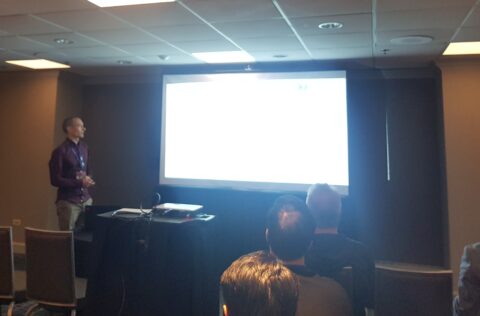Lukas’ participation at USNCCM18 in Chicago, US
From July 20th to 24th, Lukas Laubert attended the 18th U.S. National Congress on Computational Mechanics (USNCCM18), held in Chicago, USA. This major international conference brought together leading experts in computational mechanics from academia and industry, offering an excellent platform to exchange ideas and engage in discussions on advanced simulation methods. Lukas contributed to the minisymposium “Computational Interface and Contact Mechanics” on July 23, where he presented his research titled “Evaluating the coupling quality of domain decomposition methods”. His presentation focused on a novel mapping approach developed to assess the coupling quality of domain decomposition methods, particularly when bridging different computational domains, such as finite element (FE) and molecular dynamics (MD) regions.
Beyond his own presentation, Lukas attended numerous sessions covering topics such as multiscale modeling, fracture mechanics, and material modeling, gaining valuable perspectives for his ongoing research. A particular highlight of the week was a follow-up discussion with Saleh Assadi and Zachary White from the University of Colorado Boulder. Their presentations on “Meso-scale modeling of cavitation and failure of cross-linked polymer networks” and “Mechanical coupling between time-dependent and covalent bonds in molecular damage of polymer networks” inspired engaging conversations on how meso-scale network modeling could help reduce the degrees of freedom in atomistic epoxy MD models. Such approaches may eventually enable more efficient FE–MD coupling for investigating fracture processes—especially relevant since the fracture process zone of polymers typically exceeds the length scales accessible to conventional atomistic simulations.
Overall, USNCCM18 offered Lukas an inspiring environment to present his work and connect with researchers pursuing similar challenges in computational mechanics.

